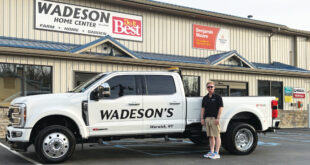At the helm of a business spanning three Northern California counties and three generations, Steve Patterson is searching for the perfect balance. As his company honors 65 hard-won years, he shares what it takes to stay at the forefront of shifting legislation, the evolving demands of pros and finding new fields to grow.
Central Valley is a building materials supplier focused primarily on the needs of pro construction outfits, vineyard operators and landscapers. Named for the fertile agricultural area that includes California’s famed winemaking region, the company’s inventory, customer base and internal focus have adapted through the decades as the local market demanded.

In 1955, Patterson’s grandparents, Robert and Evy, founded the business. As the generations passed, the company celebrated new milestones, adding locations and growing deep roots in the region. Central Valley now counts 41 acres of inventory and 55 delivery trucks, making it a key home improvement player in the region, whose separate industries intermingle to promote tourism, real estate and retail in tandem.
The region’s wine industry is estimated to produce more than $9 billion in local economic activity, and serves as a major influence on the company’s inventory, which has deepened and diversified over the years to meet customers’ needs authentically.
A New Chapter
Patterson knows retail success requires more than one iron in the fire. In January, Patterson was at the Pro Desk of his company’s flagship Napa location, greeting employees by name and chatting with customers in Spanish. Just one year removed from a defining event in the company’s history, Patterson is ready for a new chapter.
In late 2018, Central Valley acquired Foster Lumber, a full-service lumberyard with locations in nearby Fairfield and Vallejo. Once the deal was final, the Central Valley collective grew to eight locations and extended its service area by hundreds of miles. To Patterson, the deal was a powerful reminder that growth requires precision and patience.
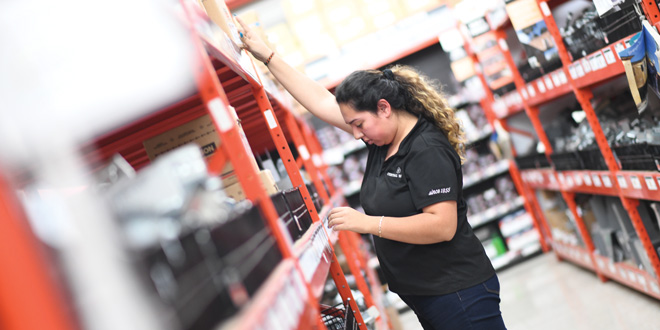
“We had been considering acquisitions as a way to grow our business for about eight or nine years,” he says. “It took a lot of good old-fashioned footwork, but pursuing the acquisition was the right choice for us.”
Patterson and his team set to work, developing a list of qualities they wanted from a potential acquisition. One defining feature of their ideal company to acquire was size.
Patterson says that as the economy and the wine industry recovered from the fallout of the Great Recession, mergers and acquisitions became more common in construction, but many larger operations were uninterested in purchasing smaller companies. He saw things differently.
“Smaller companies were more digestible to us,” he says. “We could add value to smaller companies all while helping Central Valley grow. Acquiring a smaller company put us in new communities, added new products and introduced our business to new customers.”
Patterson decided Foster Lumber was the right addition for Central Valley’s future. Patterson had known the company’s previous owner for 20 years and says the cultures of the two organizations united seamlessly.
“When people talk about the success or failure of acquisitions, they’re talking about the merging of two separate cultures,” he says. “In the end, our companies had many more similarities than they had differences.”
Both companies were family-owned and -operated, which Patterson says was appealing to Foster Lumber’s former owner, who wanted to continue the company’s legacy, even as it transitioned owners. Foster Lumber now operates as a separate though wholly owned subsidiary of Central Valley and will celebrate its 100th anniversary later this year.
As Central Valley expands its presence in California through acquisition, Patterson says he remains open to new acquisition possibilities that fit the company’s objectives and priorities.
We could add value to smaller companies all while helping Central Valley grow. Acquiring a smaller company put us in new communities, added new products and introduced our business to new customers. —Steve Patterson, Central Valley
A New Vision for HR
Patterson says hiring and training are critical for lumber and building material success in California, where the statewide unemployment rate has plunged to historic lows and finding long-term, qualified employees is challenging.
“The construction industry is still not building at the top end of production; we’re nowhere near construction levels from 2000 to 2006,” he says. “Yet in terms of workload, it still feels like it did back then. Our biggest challenge is finding and retaining employees.”
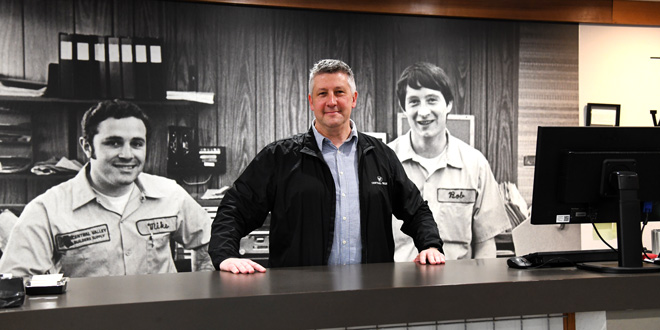 He says for many years, human resources at his company was devoted to administrative tasks like hiring and compliance. As the company emerged from the Great Recession and began to seriously consider how acquisition could begin a new era, Patterson wanted to take a more holistic approach to his company’s HR.
He says for many years, human resources at his company was devoted to administrative tasks like hiring and compliance. As the company emerged from the Great Recession and began to seriously consider how acquisition could begin a new era, Patterson wanted to take a more holistic approach to his company’s HR.
“We started considering it talent management as opposed to simple HR,” he says. “It can’t just be about finding employees; it has to cover what we do with them when they’re here. I wanted our HR to cover our hires from start to finish: Where do we find employees? How do we train them? How do we keep our employees growing? If you’re not growing, you’re dying.”
The company’s current vice president of human resources came from the tech world and incorporated some of that industry’s best practices into Central Valley’s operations. Patterson also began a mentoring program that exposed new employees to areas outside their normal duties.
“It gave everyone a view of how our different departments work,” he says. “The program lets them develop empathy for what it’s like to do someone’s job. My goal was to make a new hire better at what they do by helping them understand how they interact with every other department.”
Central Valley undertakes salary benchmarking reviews every two years to ensure the company is offering fair and enticing compensation to draw talented workers in an increasingly competitive industry and corner of the country.
Golden State Gridlock
Patterson says doing business in California is at once a moving target and his sole focus. All small business owners face operational and legal obstacles, but in California, a state which itself is often at the center of political, economic and cultural flux, staying abreast of emerging legislation takes constant attention.
“One of the biggest challenges to doing business in California is staying on top of new regulations. In 2019, more than 2,500 bills were introduced. That quantity just doesn’t exist in other states,” he says.
In August 2018, just as Central Valley was in the midst of the Foster Lumber acquisition, new regulations concerning California’s Safe Drinking Water and Toxic Enforcement Act, better known as Proposition 65, went into effect. Under the new mandates, businesses must provide visible warnings about potentially harmful compounds found in many products—including a host of items on sale in most home improvement stores.
Many business owners, even if they support the legislation, find it difficult to interpret. Unless manufacturers operate predominantly in California, they ship products without Proposition 65-compliant warning labels, putting Patterson and other small business owners across the state in a difficult limbo. Small businesses can be fined as much as $2,500 per day per infraction, forcing retailers across industries to find new solutions quickly.
“Since Proposition 65 went into effect, we’ve really relied on local business organizations to help us navigate that terrain,” he says.
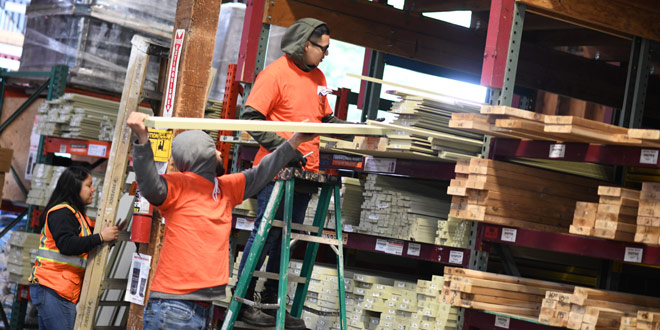 Every aisle in Central Valley’s stores includes prominent warnings about products, clearly identifying the potentially harmful materials so customers can make their own informed choices about the products they purchase.
Every aisle in Central Valley’s stores includes prominent warnings about products, clearly identifying the potentially harmful materials so customers can make their own informed choices about the products they purchase.
Recently, tariffs on softwood and key building materials have also played a large role in how Central Valley does business. Though Patterson says rising lumber prices ultimately bring benefits to his business, they do create uncertainty in the market.
“When you do business in California, and in the building industry, there are so many things beyond our control,” he says. “We have to roll with the punches; we try not to concern ourselves too much with things we can’t control. Rather, we focus on understanding how tariffs and other legislation will affect us on a day-to-day operational level. We don’t want to be caught behind the eight ball.”
Despite the volatility tariffs have caused, Patterson and his team have to be resourceful to save customers money and provide the products they need.
“Central Valley sources much of its lumber from Washington and Oregon, so we were relatively insulated from Canadian softwood tariffs,” he says.
Recent trade uncertainty with China was a larger concern.
“We tried to keep as much extra product on hand as we could,” he says. The company used its five warehouses to store extra products, which has helped protect the company from rising costs through international tensions.
Products on the Vine
Products on the Vine
 Pruning Supplies
Pruning Supplies
After grapes are harvested, vines must be pruned. The company carries a range of hand-pruning shears to prepare plants for the next growing season.
 Erosion Control
Erosion Control
Bales of hay, jute netting and silt fencing help protect nutrient-rich soil from being swept away between the harvest and winter months.
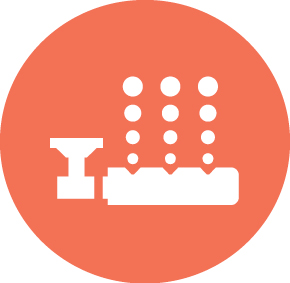 Frost Protection
Frost Protection
Systems Frost damages buds, blossoms and fruit alike. Overhead sprinkler irrigation systems minimize the effects of cool temperatures on crops.
 Spray Equipment
Spray Equipment
Backpack sprayers are used by vineyard workers to add nutrition to growing crops. Patterson says durability is a key sales driver for these products.
The Vineyard Vocation
Closer to home, Patterson says Napa’s winemaking industry has a powerful pull on how his company operates. Vineyards account for roughly 15 to 20 percent of his business, and he says they function much like regular contractor customers.
“We have farmers who are like remodelers or small contractors,” he says. “Then we have vineyard managers who are like subcontractors; they’re in charge of growing and protecting the crop. We also have direct relationships with wineries, which operate a lot like a general contractor and will have broader, more common construction needs.”
The company has been serving vineyards since the mid-1980s and now sells everything above and below ground in the rich fields: trellises, T-posts, PVC piping, irrigation systems and erosion control. Patterson says his company’s involvement with the profitable local industry fortifies Central Valley against national competitors.
“It’s a solution for the community we serve,” Patterson says. “Listening to local needs is something independents do well: We localize our business to our market, which isn’t something the big boxes do at all. Serving the needs of the wine producers requires Central Valley to truly understand how they do business.”
That commitment to meeting customers’ needs takes personal resonance for Patterson, who spent three years working in Mexico and speaks Spanish fluently, allowing him to communicate with customers and employees alike.
“Part of my job is to connect with customers and employees authentically,” he says. “It’s a recognition of the reality of California and an acknowledgement that many trades are managed, owned and dominated by Spanish-speaking people. If we’re in tune with our environment, we should offer products and services on an authentic level.”
The Pro Connection
Central Valley stocks a full array of hardware, but staff and inventory are geared toward meeting pro building customers’ high-priority needs.
At each Central Valley location is the Pro Desk, a hub of activity where employees help pro customers plan large-scale products and order the materials they’ll need. It’s a way to offer comprehensive service to dedicated customers.

“The Pro Desk is project-focused,” Patterson says. “It’s less transactional than traditional retail; it focuses on people who may need to do special orders or match existing building materials precisely. The staff usually has prior building experience and can truly understand what our pro customers need to be successful.”
The Pro Desk helps Central Valley stay nimble, as employees manage project estimates, direct-to-site delivery and securing special pricing on more than 44,000 products when possible. Central Valley has also recently started offering prefabricated walls for pro builders, adapting as market demand dictates.
“The Pro Desk offers a new level of service to professional builders,” Patterson says. “It’s a long-running feature of the business, and it’s really what our customer base has said they need.”
Besides boosting sales, the hub serves an important role in developing and maintaining business with pro customers.
“Over the years, the pro customers have come to see Pro Desk employees as extensions of their business: people they know well and trust to be proactive and find solutions,” he says.
Fire in the Distance
Alongside new legislation and rapidly refining customer needs, one of the chief variables business owners in California must contend with is the destruction caused by natural disasters, including wildfires.
Since December 2017, wildfires in the state have destroyed almost 1 million acres and caused at least 118 deaths, according to data from California’s Department of Forestry and Fire Protection. In 2017, three separate fires grew dangerously close to the Napa region, advancing and retreating around the community Patterson has sought to serve. He says the fallout from these devastating fires is inescapable and has a direct impact on how Central Valley operates in 2020.
“We’re seeing a lot of fire-related products spike in demand,” he says. “Wherever the fires strike, we see tremendous demands for fire-rated items in those areas. California has a Wildlife Urban Interface regulation that stipulates any home close to areas susceptible to wildfires must meet certain building requirements, and we’re bringing in new products to keep homes and businesses safe.”
Patterson says new advances in time-tested products have led to remarkable innovations, including products that can sense burning embers and react to extinguish them quickly. Even as his company brings fire-prevention products to customers, Patterson says his team keeps a sharp focus on the finished product.
“People are investing in products that are maybe a little less traditional, but they really do safeguard homes and buildings,” he says. “These days, many of these products are designed to appear exactly like traditional options and not sacrifice the aesthetics of a home.”
On the Horizon
Patterson says one of his key goals as a California business owner is giving back to the region that has supported his company’s multigenerational success.
In addition to its support of Habitat for Humanity and other organizations, Central Valley donates 2 percent of its profits to local families and affordable housing developments. What’s more, all full-time and nonseasonal part-time employees are given eight hours of paid time to volunteer in the community.
“The community has been so good to us,” he says. “Our customers are our neighbors, so we don’t want to be a faceless corporation. We want people to know we’re in this community and we care about it deeply.”
As the Foster Lumber acquisition scales his company to new customers and communities, Patterson is also considering the future of the business and how to guide it successfully to the fourth generation.
Statistics on long-term family business survival are stark: Some estimates say only 12 percent of all family businesses survive into the third generation and only a fallow 3 percent will enter a fourth generation of ownership. Central Valley has already beaten monumental odds, and Patterson plans to continue.
“There is a possibility of a fourth generation running Central Valley, but we’re not actively involved in that process yet,” Patterson says. “Of my seven kids, I have a son and daughter who have spent time in the business similar to how I did.”
No matter what the future looks like for Central Valley, Patterson says acquisition has taught him a key retail lesson.
“Growth is a process,” he says. “Sometimes when you least expect it, opportunities arrive and you have to explore those as they come.”
 Hardware Retailing The Industry's Source for Insights and Information
Hardware Retailing The Industry's Source for Insights and Information







